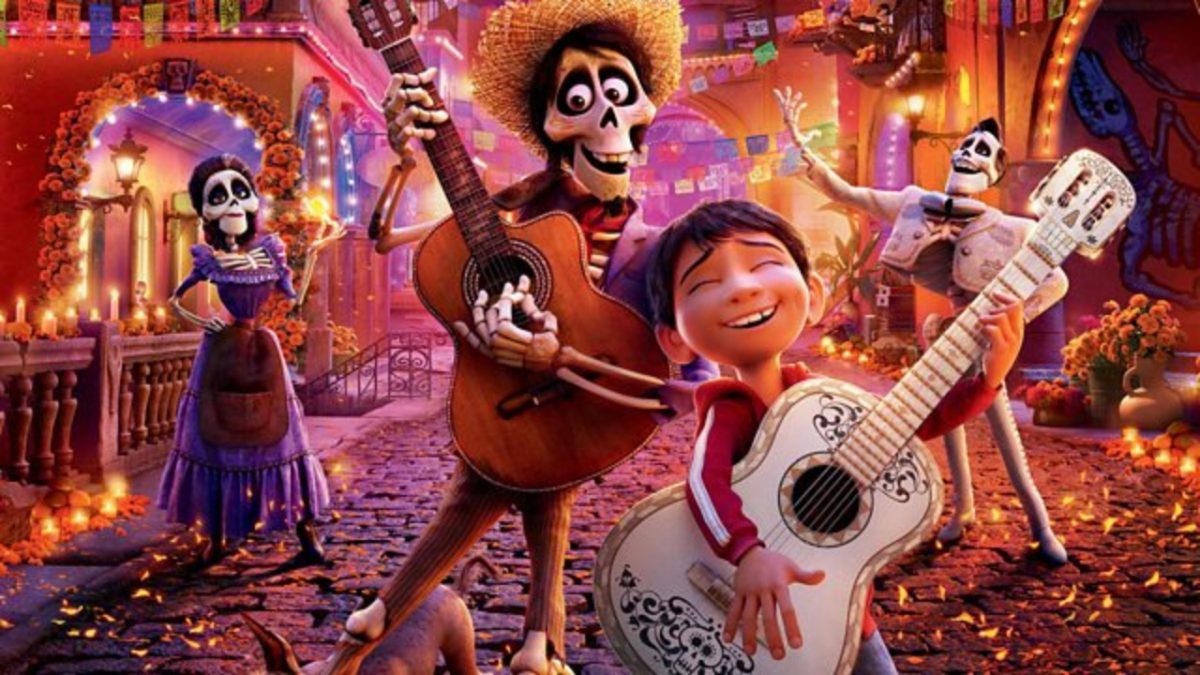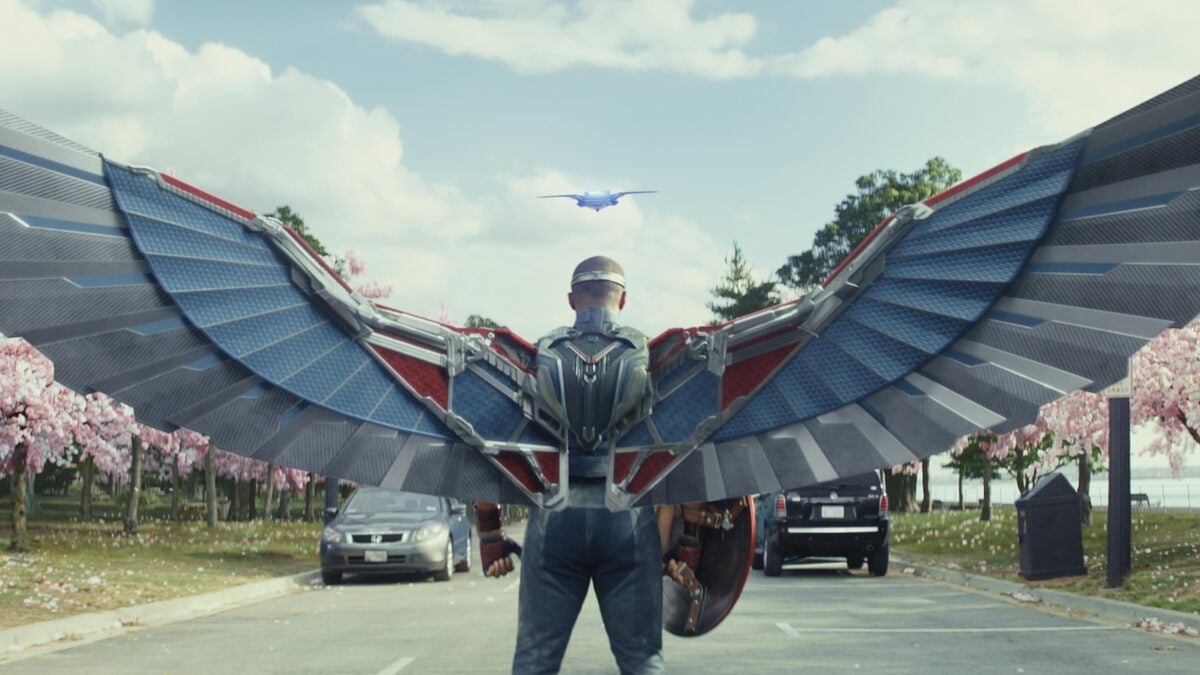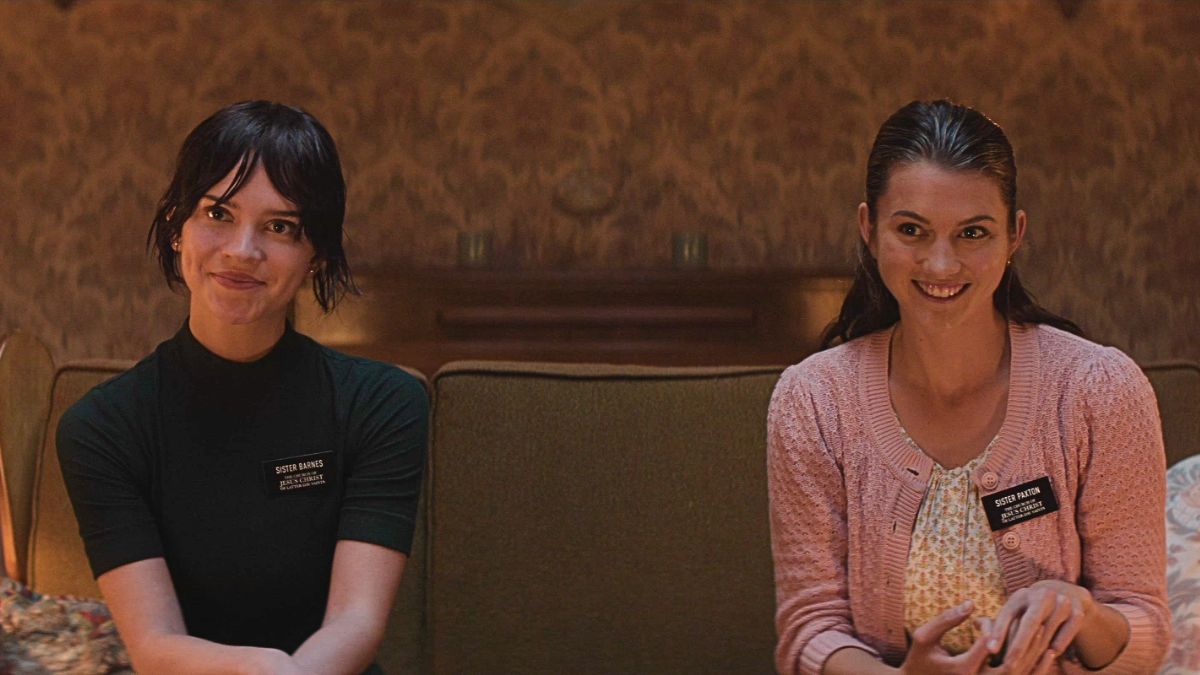As Pixar Studios imagineers yet another animated awards contender, you have to wonder when – or if – they’ll ever stumble again (even in the slightest). No company can flawlessly produce film after film of praise-worthy content, can they? Well, considering how Coco is their best release in years (very, VERY successful years), you’ll have to *keep* pondering that very query. Silently, from behind streaming tears (once again).
Lee Unkrich and Adrian Molina’s festive journey through their splashy “Land Of The Dead” is a touching, massively heartwarming story of the strongest familial variety. An afterlife exploration so inspired by the theme of death, yet never burdened by fears of the unknown. Even better? Disney/Pixar embraces yet another chance to push younger audiences towards more cultural – and inclusive – understandings. Respectful, complex and still monumentally entertaining – hot tamale, what a triumph.
Anthony Gonzalez voices Mexican son/grandson Miguel Rivera, a starry-eyed, hopeful musician born into a family of shoemakers. The problem? “No music!,” his Abuelita (Renee Victor) demands. It was music that drove apart the earliest Rivera ancestors, which led the widowed Mamá Imelda (Alanna Ubach) to begin shaping her footwear empire.
Miguel, motivated by restriction, escapes his family enclosure and attempts to win a local “Battle Of The Bands” competition which might grant his dreams reality. That’s what his idol – performance legend Ernesto de la Cruz (Benjamin Bratt) – would have done. But, after a mausoleum break-in to “borrow” Cruz’s guitar, Miguel finds himself crossed over to his deceased relatives’ afterlife realm – a curse on this very Day of the Dead. Can the human child trust in family and accept a conditioned blessing that’d send him home? Not if it means life without music.
Despite Coco‘s reality of being a fairy tale that embraces death, parents shouldn’t fret about lingering conversations afterward. Where something like Storks is awkward and clunky in describing one of life’s most natural acts to immature audiences, Coco‘s treatment of passing from life to skeletal form draws no balk. In the story’s context, Miguel connects with Riveras of old and learns the importance of honoring legacy. How memories give the deceased everlasting life. Miguel is shown a lonesome second life without family, friends or remembrance, as his *super* extended family rallies around in a time of desperate need – true “family first” clarity.
Such belief in ritualistic conviction comes with the territorial appreciation of Miguel’s culture. Candlelit “ofrendas” welcome ancestors who “visit” on Día de los Muertos (permitting their picture has been set out) while faces are painted with ghoulish designs. As Moana explored native Maori traditions, Coco shines a light on celebrations of life that cross superstitious and paranormal wires without any sense of horror. Papá Julio (Alfonso Arau) and Tía Victoria (Dyana Ortelli) jangle their bones as vertebrae and rib-cages float unconnected, while Mamá Imelda rides her mammoth multicolored tiger “alebrije” – a spirit animal guide. Frida Kahlo appears, orange flower pedals bridge our world with the “Bone Zone,” and alters are decked in skull-candy decor and gifts of gluttony – all informational intake hidden under the comfort of Pixar whimsy. Learning can be fun, and fulfilling!
Don’t fret, though – Coco is no history lesson. Animators paint this visually explosive picture of a metropolis where souls live happily in favela-like communities (as long as their presence isn’t forgotten on Earth). Pinata-patterned alebrijes fly about while walking bone piles react to Miguel as humans might given a flipped-perspective. Gags lean into undead puns but never with cheapness, while musical numbers – specifically from heartthrob Ernesto de la Cruz – charm with a mariachi’s cry as fingers pluck South of the Border melodies. Each string reverberating with exquisite detail, digital animation able to guide hands fluidly over a guitar with more precise motions than my own fingers could pull-off and slide to a new fret. Pixar has crafted more than mere animation, they have created life – a peacocking, exquisite reality movie that fans can get lost in.

Again, all this would be lost on a less enriching feast for the soul. Miguel’s confliction is relatable to children with dreams; aspirations of grandeur that may not reflect their family’s professional lineage. So much of Coco is about Abuelita and others keeping Miguel from his passionate guitar expressionism – explanation for his secret attic shrine to Cruz and eventual cursed state (stealing from the dead, on Día de Los Muertos no less).
Miguel presumes his family wants to inflict pain, but intentions harbor nothing but love. It takes a team-up with dead-forgotten Hector (Gael García Bernal), a challenge of Cruz’s cut-throat egotism and one final face-to-face with true family to show Miguel this very truth, but he – much like any wayward youngster – recognizes childish impulses. It’s such a careful balance between respecting Miguel’s youthful angst while a soothing blanket of compassion and reliance wraps like a home-knitted quilt. Exploratory, adventurous and rewarding.
Coco may not be *the* best Pixar film – a crown I, myself, reserve for Ratatouille – but what a silly comparison when you’re talking about Pixar’s second, third, or whatever-best film. This is a masterpiece of woven ancestral roots and the importance of “familia,” confident in song and poetic in vision. Kaleidoscopes of colors palette even a single object, multiplied by the infinite bounds of creatively abundant Land of the Dead workmanship. Sounds, sights, and sensations all harmonize in the most moving way – far more than twirly, clap-happy dances. They’re dead, we’re loving it. A triumphant treat and the year’s must-see family attraction.





Published: Nov 9, 2017 07:54 pm